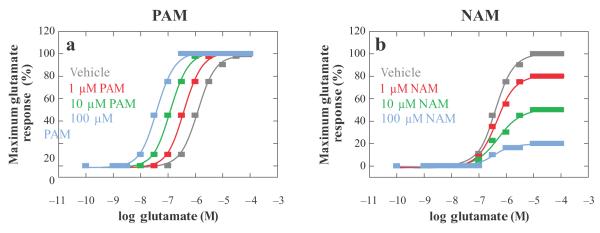Figure 2.
Simple schematic representation of the positive allosteric regulator (PAM) and negative allosteric regulator (NAM) activity using an in vitro functional assay. (a) Monitoring of a functional assay such as calcium mobilization shows that increasing PAM concentrations progressively shift the glutamate concentration response for an mGluR to the left. Depending on the assay used, PAMs can also cause an increase in the maximal agonist response. (b) Increasing NAM concentrations progressively shift the magnitude of the concentration response curve and produce little change in potency, indicating a noncompetitive form of antagonism.

